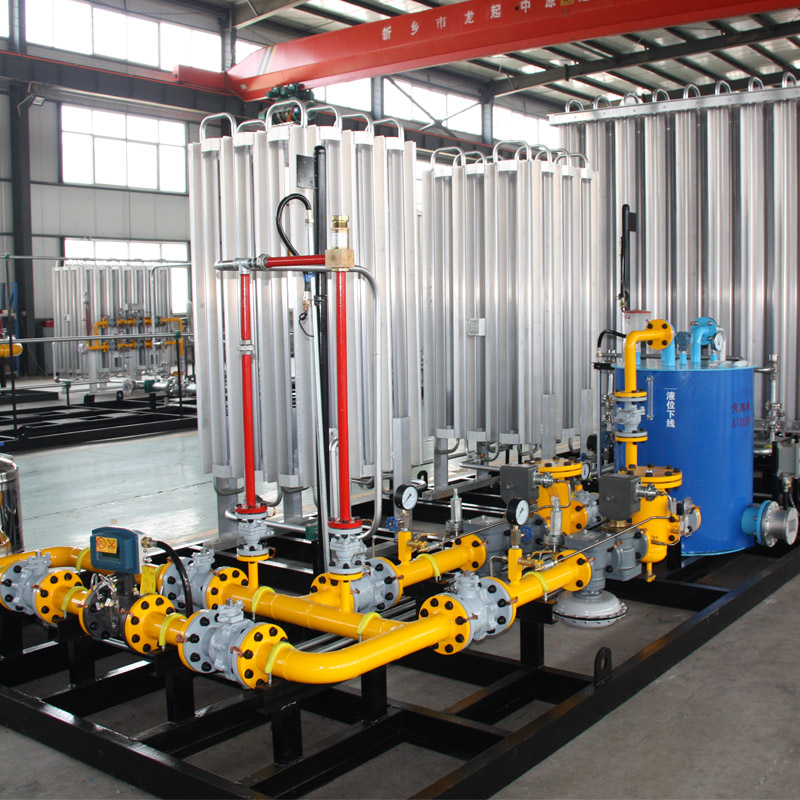
Dec . 03, 2024 16:49
Back to list
high pressure regulators
Understanding High Pressure Regulators Essential Components for Safe Operations
High-pressure regulators play a crucial role in managing gas pressure in various industries, including oil and gas, chemical processing, and manufacturing. These devices are designed to reduce the pressure of a gas from a high level to a lower, more manageable level, ensuring safe and efficient operations. In this article, we will explore the fundamental workings of high-pressure regulators, their significance, types, applications, and best practices for maintenance.
What is a High Pressure Regulator?
A high-pressure regulator is a device that automatically reduces the inlet pressure of gas to a predetermined outlet pressure. The primary purpose of a regulator is to maintain stable pressure within a system, ensuring that equipment operates safely and effectively. High-pressure regulators are typically installed on gas cylinders, pipelines, and other storage systems to manage the pressure exerted by gases, including natural gas, propane, and various industrial gases.
How Do High Pressure Regulators Work?
High-pressure regulators function on principles of pressure dynamics. They consist of a diaphragm, adjusting spring, and valve assembly. When gas enters the regulator, it pushes against the diaphragm. As pressure builds up, the diaphragm moves, which compresses the spring. This adjustment allows the valve to open or close, regulating the flow of gas and maintaining a steady outlet pressure.
The accuracy and responsiveness of high-pressure regulators are critical for safety. If the outlet pressure exceeds a certain threshold, the regulator will automatically adjust to prevent potential hazards such as leaks, explosions, or equipment failure.
Types of High Pressure Regulators
High-pressure regulators can be categorized based on their design and intended application
1. Single-stage Regulators These regulators reduce high pressure to a medium pressure in a single step. They are typically used for applications where precise control of outlet pressure is not critical.
2. Two-stage Regulators These regulators consist of two separate stages for pressure reduction. The first stage reduces pressure to a medium level, while the second stage further stabilizes it to the desired outlet pressure. Two-stage regulators offer better precision and are preferable for critical applications requiring tight pressure control.
3. Adjustable Regulators These regulators allow users to set the desired outlet pressure manually, making them versatile for different applications. They are often used in laboratory settings or for variable gas flow requirements.
high pressure regulators

4. Electronic Regulators Equipped with sensors and automated controls, electronic regulators provide advanced precision and real-time monitoring of pressure levels. They are commonly used in sophisticated systems where maintaining specific pressure is vital.
Applications of High Pressure Regulators
High-pressure regulators find applications in multiple industries, including
- Oil and Gas Regulating the pressure of natural gas from pipelines and storage tanks to ensure safe transport and usage. - Chemical Manufacturing Controlling gas pressure during chemical processes to maintain safety and efficiency. - Welding and Cutting Managing oxygen and fuel gas pressure in welding equipment for consistent flame characteristics. - HVAC Systems Regulating refrigerant gas pressure in air conditioning systems.
Maintenance and Best Practices
Regular maintenance of high-pressure regulators is essential to ensure their longevity and reliability. Here are some best practices
1. Routine Inspection Regularly check for leaks and inspect the diaphragm for wear and tear. Replace any damaged components promptly.
2. Calibration Periodically calibrate the regulator to ensure it delivers accurate outlet pressure, especially in critical applications.
3. Cleanliness Keep the regulator clean, as debris can obstruct the valve and diaphragm, affecting performance.
4. Documentation Maintain records of maintenance activities and any replacements made to monitor the regulator's performance over time.
In conclusion, high-pressure regulators are pivotal in maintaining safe operating conditions across various industries. Understanding their function, types, and applications can aid in selecting the right regulator for specific needs, thereby improving system efficiency and safety. Proper maintenance further ensures that these essential devices perform optimally, protecting both personnel and equipment from potential hazards.
Next:
Latest news
-
Safety Valve Spring-Loaded Design Overpressure ProtectionNewsJul.25,2025
-
Precision Voltage Regulator AC5 Accuracy Grade PerformanceNewsJul.25,2025
-
Natural Gas Pressure Regulating Skid Industrial Pipeline ApplicationsNewsJul.25,2025
-
Natural Gas Filter Stainless Steel Mesh Element DesignNewsJul.25,2025
-
Gas Pressure Regulator Valve Direct-Acting Spring-Loaded DesignNewsJul.25,2025
-
Decompression Equipment Multi-Stage Heat Exchange System DesignNewsJul.25,2025

